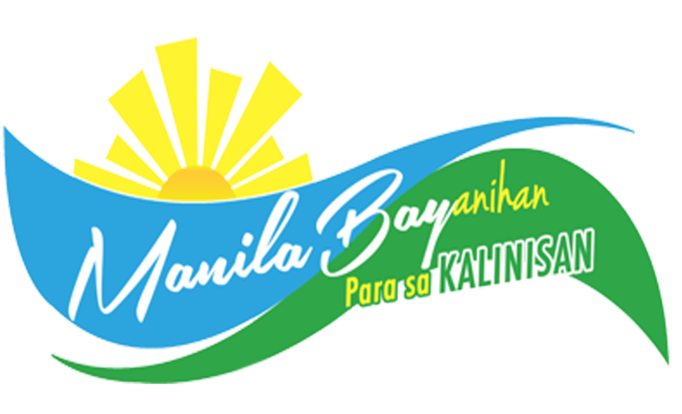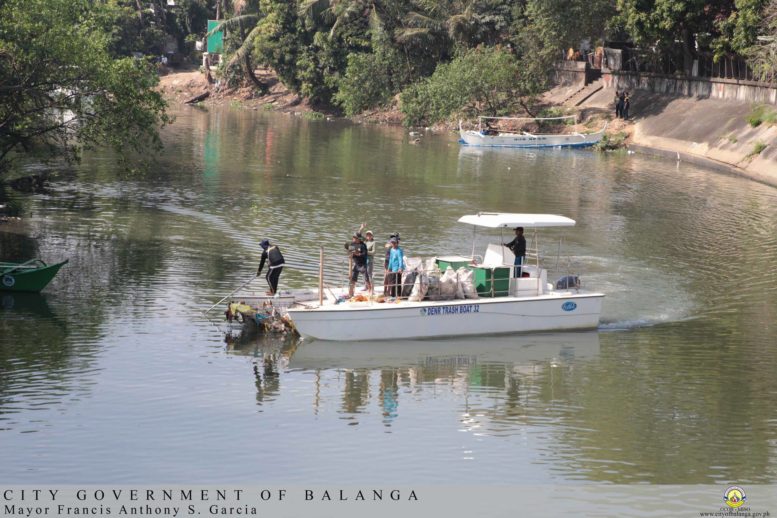The Supreme Court rendered a decision on 18 December 2008 ordering 13 government agencies, including the Department of Environment and Natural Resources (DENR) to clean up, rehabilitate, and preserve Manila Bay, and restore and maintain its waters to SB level to make them fit for swimming, skin-diving, and other forms of contact recreation. The case stemmed from a complaint filed on January 29, 1999 before the Regional Trial Court (RTC) in Imus, Cavite against the following agencies for their failure to perform their job of preserving the water quality of the Bay:
- DENR
- Department of the Interior and Local Government (DILG)
- Metropolitan Waterworks and Sewerage Systems (MWSS)
- Local Water Utilities Administration (LWUA)
- Department of Agriculture thru the Bureau of Fisheries and Aquatic Resources (DA-BFAR)
- Department of Public Works and Highways (DPWH)
- Metropolitan Manila Development Authority (MMDA)
- Philippine Ports Authority (PPA)
- PNP-Maritime Group
- Philippine Coast Guard (PCG)
- Department of Health (DOH)
- Department of Education (DepEd)
- Department of Budget and Management (DBM)
Likewise, heads of agencies, in line with the principle of “continuing mandamus”, were ordered to each submit to the Court a quarterly progressive report of the activities undertaken in accordance with the Decision. The Manila Bay Advisory Committee (MBAC) was created to receive and evaluate the quarterly progressive reports on the activities undertaken by the agencies in accordance with said decision and to monitor the execution phase.
Specifically for the DENR, the Court ordered it to fully implement its Operational Plan for the Manila Bay Coastal Strategy (OPMBCS) and to call regular coordination meetings with concerned government departments and agencies to ensure its successful implementation in accordance with the indicated completion schedules. The OPMBCS outlines the actions and specific projects that would result to the realization of the stakeholders’ shared vision for Manila Bay and to the Court’s order of cleaning up, rehabilitating and restoring the Bay’s water to SB Class. The interventions under the OPMBCS are grouped into five (5) clusters/outcomes namely: (1) Liquid Waste Management; (2) Solid Waste Management; (3) Informal Settler Families (ISFs) and Illegal Structures Management; (4) Habitat and Resources Management; and (5) Partnership and Governance, which addresses the barriers and enabling concerns of the OPMBCS, as well as, integrates the implementation of the four (4) preceding clusters.
It is worth to note that when we talk about Manila Bay we are not just talking about the bay itself with a surface are of 1,870 km2 and a coastline of 190 kilometers. The Manila Bay Region consists of the National Capital Region (NCR), four (4) coastal provinces (Bataan, Bulacan, Cavite and Pampanga) and four (4) non-coastal provinces in the watershed areas (Laguna, Nueva Ecija, Rizal and Tarlac), comprising about 178 local government units (LGUs).
To facilitate the focus implementation of the OPMBCS and immediate feedback to the DENR Secretary, the Manila Bay Coordinating Office (MBCO) was transferred to the Office of the Secretary and was strengthened in 2011.
From 2011 to 2016, the implementation of the OPMBCS resulted to the following:
A. Liquid Waste Management
While the waters of the Bay remain below the SB level, much has been done to minize the pollution load that went into the Bay. 9,600 establishments were targeted to be monitored from 2011-2016. Actual accomplishment yielded to 10,168 industries monitored.
However, only 49% of the monitored establishments have discharge permits which resulted to about 24,688.9 kg/day (54.17%) of pollution load from industrial sources treated in accordance with DENR effluent standards. The non-compliant establishments were issued with Notices of Violation (NOVs) by the Environmental Management Bureau (EMB) and compelled them to comply with existing laws, rules and regulations.
With regard to provision of sanitation services and sewerage connection, 14% of the water served population has been connected to sewer lines and sewerage system. While, 44% of the water served population has been offered sanitation services. These efforts of the MWSS, through their water concessionaires, have resulted to 35,167 kg/day BOD or 9% total pollution loading treated in accordance with current sewage and septage regulation and standards.
Lastly, three (3) Water Quality Management Areas (WQMAs) have been designated in 2016 pursuant to the Clean Water Act and an offshoot of the Area-Based Management Planning approach carried out. These are the (1) San Juan River System; (2) Imus-Ylang-ylang-Rio Grande-Canas River System; and (3) Marilao-Meycauyan-Obando River System. WQMAs are designated to address conditions which affect the physicochemical, biological and bacteriological reactions and diffusions of pollutants in the water bodies or otherwise share common interests or face similar development programs, prospects or problems.
B. Solid Waste Management Cluster
For Solid Waste Management, a total of 89 of the 178 (50%) local government units within the Manila Bay watershed area have approved 10-Year Solid Waste Management Plan. While 94 (54%) LGUs have functional materials recovery facility (MRF).
Cases have been filed in the Ombudsman against 13 LGUs for still operating open dumpsites. Likewise, continuous assistance by the DILG and the National Solid Waste Commission (NSWMC) to the LGUs is being carried out to make the 178 LGUs compliant with R.A. 9003.
C. Informal Settler Families (ISFs) and Illegal Structures Management
The baseline target in 2011 was 59,180 ISFs to be removed from the easement areas of various waterways within the Manila Bay area. From 2011-2016, the DILG, MMDA and DPWH, in partnership with concerned local government units, were able to relocate 45,204 ISFs (76.38%).
However, the LGUs failed to contain the growth of the ISFs along the waterways. As of end of 2016, the total number of ISFs within the Manila Bay area has ballooned to 184,257 or about 211% from the 2011 figure.
D. Habitat and Resources Management
One of the targets under the Habitat and Resources Management Cluster is the reduction of soil erosion as sedimentation and agricultural runoffs are also major causes of water quality problems. To address this concern, the OPMBCS targeted the greening/vegetation of about 68,752 hectares. From 2011-206, a total of 106,938 hectares have been planted under the National Greening Program (NGP).
With regard to the rehabilitation of Manila Bay ecosystems, the target was to restore the 1994 level of mangrove areas which is approximately 794 hectares. The accomplishment for 2011-2016 reached to about 600 hectares.
Aside from the restoration/rehabilitation of mangrove areas, two (2) wetlands have been added to the list to be protected. These are the Las Pinas-Paranaque Critical Habitat and Ecotourism Area (LPPCHEA) and the Balanga Wetland and Nature Park. The LPPCHEAS was declared a Ramsar site in March 2013, a wetland of international importance.
Moreover, five (5) locally managed marine protected areas were established. These are in (1) Mariveles, Bataan, (2) Tanza, (3) Naic, (4) Ternate, and (5) Carabao Island, all in the Province of Cavite.
E. Partnership and Governance
- Scientific studies and adaptive management were carried out to strengthen the approach in planning and policy formulations. Among the studies that were conducted under the OPMBCS are as follows:
- Assessment of Non-Point Source Pollution From Croplands of Manila Bay System
- Application of Stable Isotopes to the Assessment of Pollution Loading From Various Sources in the Pampanga River System Into the Manila Bay
- Study on Benchmark Data on Pollution Load From Livestock Sources (Point Sources) – Estimation of Pollution Loading From Livestock and Poultry
- Development of Analysis and Modeling Tools As Part of Decision Support System for Managing the Environmental Quality of Manila Bay/Laguna Lake Watershed System
Moreover, area-based management plans were formulated and currently being implemented in 13 river systems in the Manila Bay area. This is to address the concern that to clean Manila Bay you have to clean the water coming from the source (upstream). Like the water quality management areas, the ABMP addresses the four thematic concerns of the OPMBCS on a micro level or per river system. Appropriate institutional arrangement that has been agreed upon is instituted per ABMP area to ensure its implementation and coordination among concerned agencies, partners and stakeholders. The river systems with an ABMP are as follows: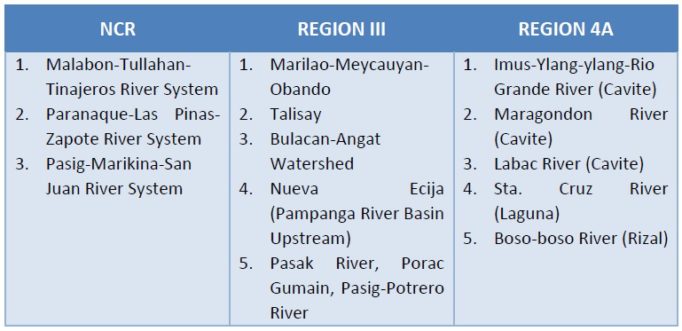
The MBCO has also distributed forty (40) trash collecting boats to various local government units and agencies to aid them in the cleanup of Manila Bay and its waterways.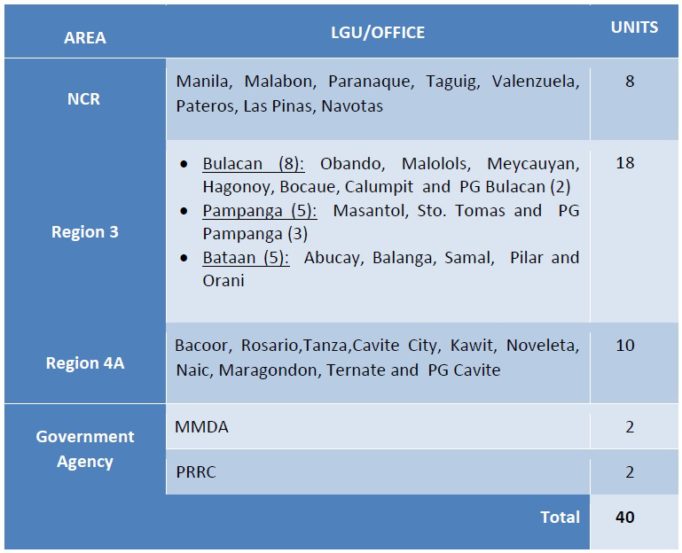
Real time water quality monitoring equipment (WQME) have been installed at the (1) Vitas Pumping Station in Tondo, Manila, (2) Napindan Pumping Station, (3) Libertad Pumping Station in Pasay City and at the (4) Coast Guard Headquarters in Port Area, Manila. Four additional WQME will be installed in identified sites in Pampanga, Bulacan, Bataan and Cavite.
Currently, the OPMBCS has been updated and its coverage is 2017-2022. The updated OPMBCS is a product of series of workshops and consultations among mandamus agencies and other stakeholders. The finished product was presented to the Manila Bay Advisory Committee (MBAC) last 05 May 2017, and was approved in principle by Justice Presbitero Velasco, Chairman of the MBAC.
Final copy of the 2017-2022 OPMBCS incorporating the amendments as well as the enhancement of the Plan as agreed during the MBAC meeting was submitted to the Supreme Court on 13 June 2017. The updated OPMBCS serves as a guide to all mandamus agencies with regard to implementation of their respective targets and deliverables.
Last 10 August 2017, DENR Secretary Roy A. Cimatu presided the 1st Meeting for CY 2017 of the Manila Bay Coordinating Committee (MBCC). The meeting was primarily called to re-affirm the commitments of all the mandamus and concerned agencies, and to further forward all the efforts and actions for the implementation of the 2017-2022 Operational Plan for the Manila Bay Coastal Strategy (OPMBCS). It was the 2nd MBCC meeting presided by the DENR Secretary. The first was in 2009 by then Sec. Jose L. Atienza, Jr.
But more than just implementing the OPMBCS, we must realize that it is the duty and responsibility of every citizen of this nation to protect, conserve and rehabilitate Manila Bay. Practicing solid and liquid waste management, volunteering in clean-up activities, participating in tree planting projects, among others, and adhering to environmental laws could help bring back the Bay back to its former glory.
Makiisa at makibahagi sa MANILA BAYanihan para sa Kalikasan!
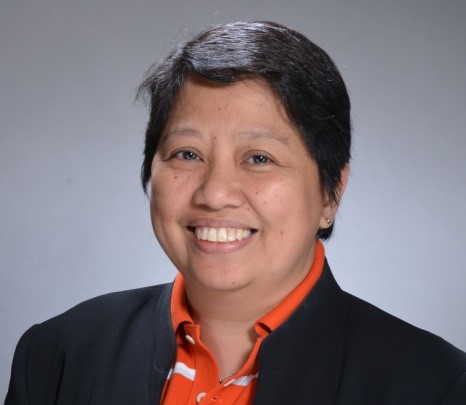
Donna Mayor-Gordove is currently the Executive Director of the Manila Bay Coordinating Office (MBCO). She has been with the Department of Environment and Natural Resources (DENR) since 2005 and held various supervisory positions.
Prior to her stint with the DENR, she worked in the Department of Transportation and Communication (now, the Department of Transportation), the Development Academy of the Philippines (DAP) and the Housing and Urban Development Coordinating Council (HUDCC).
She is a graduate of Bachelor of Science in Commerce at the De La Salle University and has an M.A. in Urban and Regional Planning at the School of Urban and Regional Planning, University of the Philippines. She is a licensed Environmental Planner and placed 3rd in the 1998 Environmental Planner Licensure Examination.
